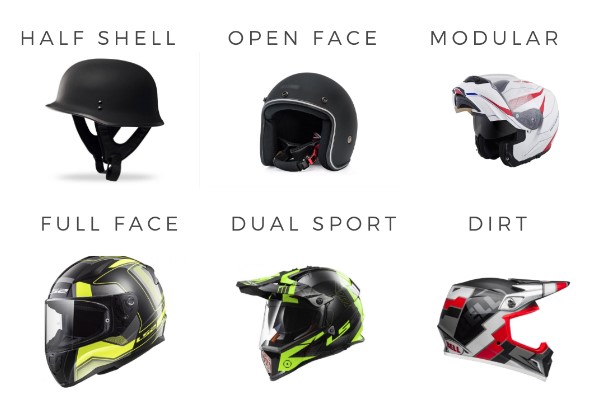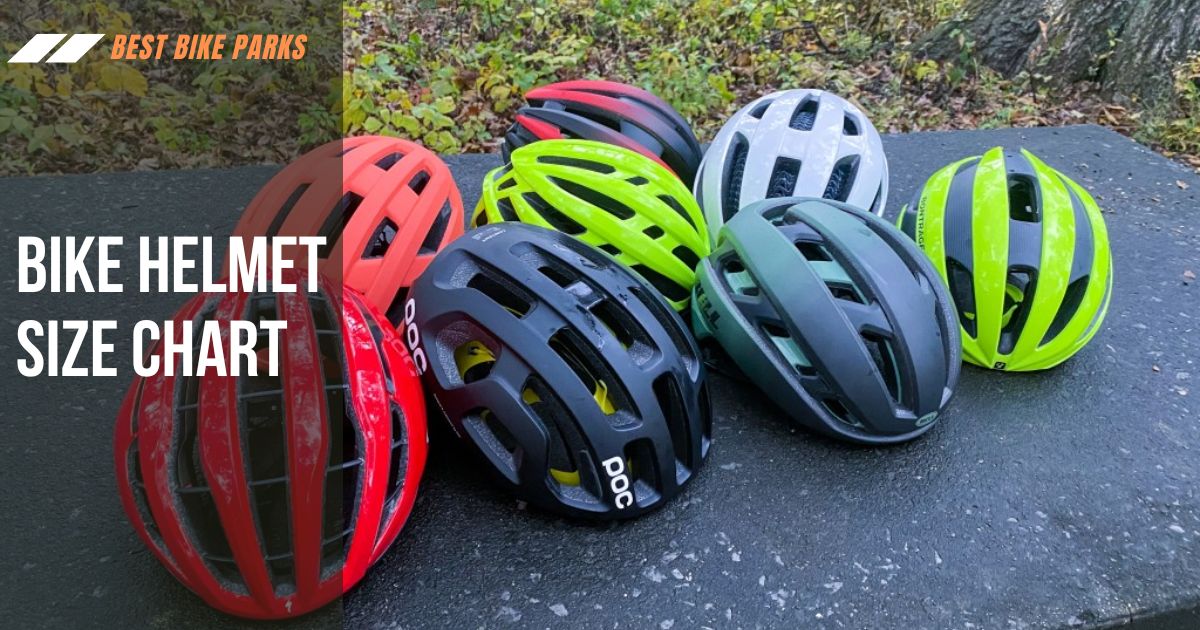Whether you’re an avid cyclist or a casual weekend rider, making sure proper safety is paramount. Among the super important gear, a correctly fitting bike helmet stands out as a non-negotiable. A helmet that’s too loose can easily dislodge during an impact, while one that’s too tight can lead to discomfort and distraction. This is where bike helmet size charts come into play, providing a valuable tool for determining the perfect fit.
Navigating Bike Helmet Size Charts
Understanding the Basics of Bike Helmet Sizing

Before diving into the specifics of bike helmet size charts, it’s super important to understand the basics of helmet sizing. Bike helmets come in various sizes ranging from extra-small (XS) to extra-large (XL). These sizes are generally based on the head circumference measurement but may vary slightly among manufacturers. It’s super important to understand that a ‘medium’ in one brand might not equate to a ‘medium’ in another, emphasizing the importance of consulting size charts specific to the brand you’re interested in.
The Importance of Accurate Head Measurement
The first step in using a bike helmet size chart is accurately measuring your head circumference. This measurement is the most critical factor in determining your helmet size. To measure your head, you need a soft measuring tape. Wrap the tape around the fullest part of your head, typically just above your eyebrows and ears, making sure it’s level all the way around. If you don’t have a measuring tape, a string and a ruler can work as a substitute. Once you have your measurement, note it down, preferably in both centimeters and inches, to have flexibility when consulting different size charts.
Tips for Accurate Head Measurement
- Ensure the measuring tape or string is snug but not overly tight.
- Take multiple measurements to ensure accuracy.
- Measure in the late afternoon, as head size can slightly vary throughout the day due to fluid retention.
Head Circumference: The Foundation of Helmet Fit
The cornerstone of bike helmet sizing lies in measuring your head circumference. This involves placing a cloth tape measure or a piece of string around your head, just above your eyebrows and ears. Ensure the tape measure is snug but not too tight, and record the measurement in centimeters or inches. This measurement is super important as it’s the primary basis for determining the appropriate helmet size for you.
Why Head Circumference Matters
The measurement of your head’s circumference plays a really key role in determining the appropriate size of helmet you require. This aspect is particularly super important because, unlike many other items of clothing or accessories that may offer some degree of flexibility or stretch, helmets are designed with a rigid structure.
This inherent lack of “give” in a helmet’s makeup underscores the importance of selecting the correct size. It’s not just a matter of comfort; choosing a helmet that fits properly is super important for making sure optimal safety. The right helmet size, precisely aligned with the dimensions of your head, guarantees that the helmet can perform its primary function of protection effectively, minimizing risks in the event of an impact or collision. Therefore, accurately measuring the circumference of your head and using this measurement as a guiding metric for helmet selection is a critical step in safeguarding yourself while engaging in activities where helmets are necessary.
Common Mistakes in Measuring Head Circumference
When it comes to measuring head circumference, there are several common errors that can significantly impact the accuracy of the measurement. These mistakes can lead to incorrect readings and, consequently, potential misinterpretations regarding the size or growth patterns of an individual’s head, which can be particularly super important in pediatric assessments.
- Not measuring at the correct level around the head.
- Using a rigid or inflexible measuring tool.
- Measuring too tightly or loosely, leading to an inaccurate reading.
Interpreting Bike Helmet Size Charts: Deciphering the Numbers
Once you have your head circumference, it’s time to consult the bike helmet size chart. These charts typically display a range of head circumferences corresponding to different helmet sizes. For instance, a head circumference of 54-56 cm might fall under the ‘medium’ helmet size category. Understanding how to read these charts is critical in selecting the right helmet.
Reading a Standard Size Chart
Most size charts will list helmet sizes next to the corresponding head circumference range. It’s important to note that these ranges are not absolute. If your measurement falls on the border between two sizes, it’s often recommended to try on both sizes to determine the best fit.
What if You’re Between Sizes?
In the scenario where you find yourself in a position where your measurements fall between two sizes, there are several strategies you can employ to ensure you select the helmet that best suits your needs:
- Trying on both sizes to see which one offers a better fit.
- Assessing if the helmet manufacturer offers an adjustment system for a more customized fit.
- Checking if the brand provides thicker or thinner padding to adjust the helmet’s interior size.
The Role of International Sizing Standards
Different countries may have different sizing standards. For example, a medium in the U.S. might not be the same as a medium in Europe. Be aware of these differences, especially when purchasing helmets from international brands or online platforms.
Considering Helmet Styles and Shapes
While head circumference is a super important factor, it’s not the sole determinant of helmet fit. Helmet styles and shapes also play a significant role. Some helmets are designed for rounder heads, while others cater to oval-shaped heads. Trying on different helmets is super important to identify the style that best suits your head shape.

The Impact of Helmet Shape on Fit
The shape of your head can greatly influence how a helmet fits. There are generally three head shapes to consider:
- Round Oval: This shape is almost circular when viewed from above.
- Intermediate Oval: This is the most common head shape, slightly longer front-to-back than it is side-to-side.
- Long Oval: This shape is significantly longer front-to-back than it is side-to-side.
Identifying your head shape is as important as knowing your size. A helmet designed for a different head shape, even if it’s the correct size, can be uncomfortable and less effective in terms of safety.
How to Determine Your Head Shape
To determine your head shape, you can:
- Use a mirror or have someone look down at your head from above.
- Take a photo from above your head to get a clearer view of your head shape.
- Feel your head’s shape with your hands, noting the length and width.
Helmet Styles: More Than Just Aesthetic Choices
Helmet styles can vary significantly, from aerodynamic road helmets to sturdy mountain biking helmets. These styles are not just about looks; they’re designed to meet the specific needs of different cycling disciplines. For example, mountain biking helmets often have additional coverage and protection around the back and sides of the head, which can affect how they fit.
Ensuring a Proper Fit: The Checklist
A well-fitting bike helmet should exhibit the following characteristics:
- Snug but not tight: The helmet should fit comfortably without causing pressure points or excessive tightness.
- No rocking or shifting: The helmet should remain securely in place and not move excessively during head movements.
- Level and centered: The helmet should sit level on your head, centered between your forehead and the back of your head.
- No gaps or pinching: The helmet should not leave any gaps between your head and the helmet lining.
- Chin strap snugness: The chin strap should be secure but not uncomfortable, allowing for a finger or two to fit under the strap.
Ensuring the Right Fit: Tips and Tricks
- Adjustment Systems: Many helmets come with adjustment systems at the back. These can be dialed in for a snugger or looser fit, depending on your preference.
- Padding Adjustments: Swapping out or adjusting the internal padding can also help fine-tune the fit.
- Wearing it Right: Always wear your helmet in the intended position – not tilted back on your head or sitting too low on your forehead.
- Regular Reassessment: Your fit may change over time due to padding compression or other factors. Regularly reassess your helmet’s fit.
Common Fit Issues and Solutions
- Pressure Points: If you feel pressure in specific areas, try adjusting the padding or consider a different helmet shape.
- Slipping Helmet: A helmet that slips forward or backward might be too big or improperly adjusted.
- Loose Chin Strap: A chin strap that’s too loose won’t secure the helmet properly. Tighten it until you can fit only one or two fingers between the strap and your chin.
Conclusion
Choosing the right bike helmet size is not just about aesthetics; it’s about making sure your safety and comfort on every ride. By following the guidelines outlined in this guide, you can confidently select a helmet that fits perfectly, allowing you to focus on the joys of cycling without compromising protection. Remember, a properly fitting helmet is an investment in your health and well-being, making it an super important companion for every cyclist.
As you gear up for your next ride, don’t forget to visit Best Bike Parks for more information and resources to enhance your cycling experience.








